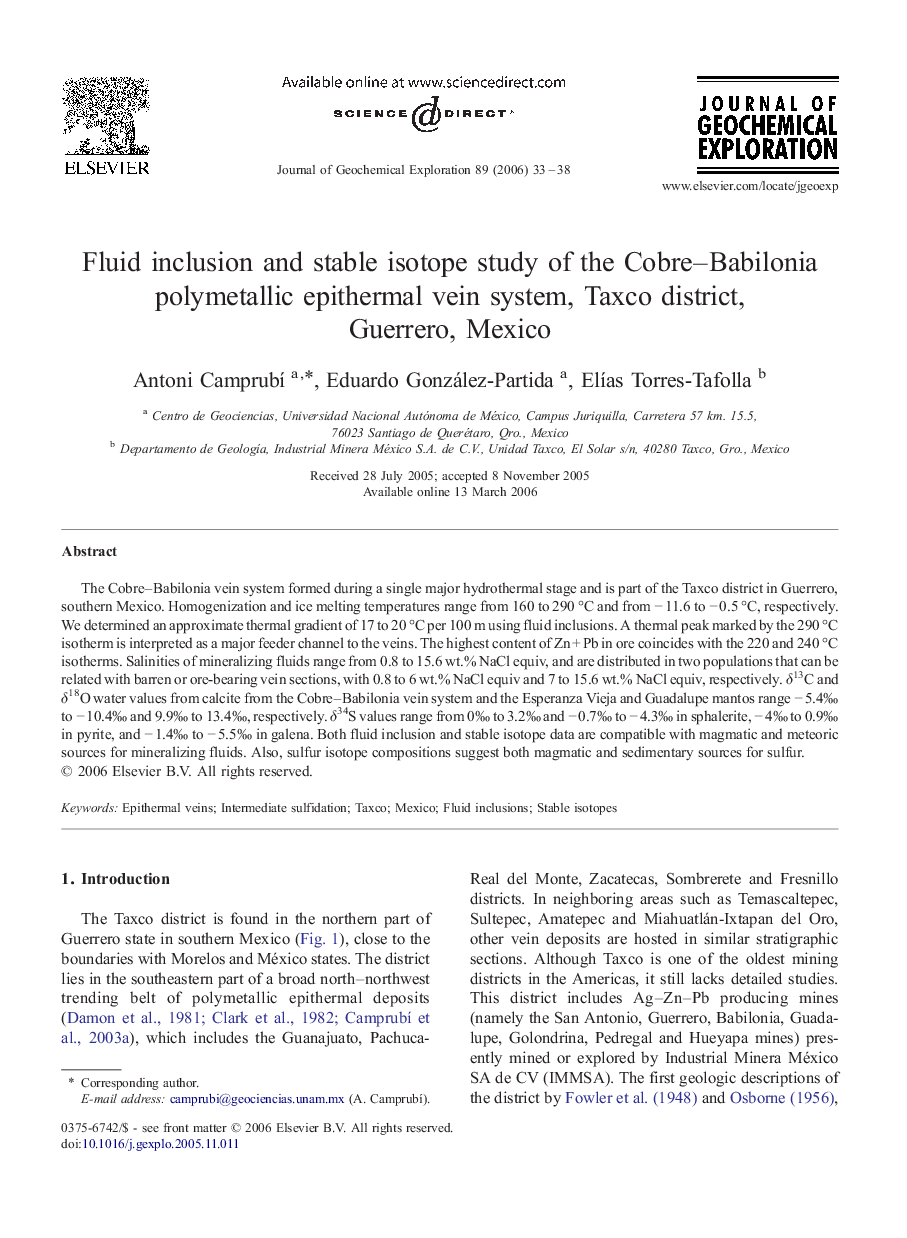| کد مقاله | کد نشریه | سال انتشار | مقاله انگلیسی | نسخه تمام متن |
|---|---|---|---|---|
| 4458412 | 1620961 | 2006 | 6 صفحه PDF | دانلود رایگان |

The Cobre–Babilonia vein system formed during a single major hydrothermal stage and is part of the Taxco district in Guerrero, southern Mexico. Homogenization and ice melting temperatures range from 160 to 290 °C and from − 11.6 to − 0.5 °C, respectively. We determined an approximate thermal gradient of 17 to 20 °C per 100 m using fluid inclusions. A thermal peak marked by the 290 °C isotherm is interpreted as a major feeder channel to the veins. The highest content of Zn + Pb in ore coincides with the 220 and 240 °C isotherms. Salinities of mineralizing fluids range from 0.8 to 15.6 wt.% NaCl equiv, and are distributed in two populations that can be related with barren or ore-bearing vein sections, with 0.8 to 6 wt.% NaCl equiv and 7 to 15.6 wt.% NaCl equiv, respectively. δ13C and δ18O water values from calcite from the Cobre–Babilonia vein system and the Esperanza Vieja and Guadalupe mantos range − 5.4‰ to − 10.4‰ and 9.9‰ to 13.4‰, respectively. δ34S values range from 0‰ to 3.2‰ and − 0.7‰ to − 4.3‰ in sphalerite, − 4‰ to 0.9‰ in pyrite, and − 1.4‰ to − 5.5‰ in galena. Both fluid inclusion and stable isotope data are compatible with magmatic and meteoric sources for mineralizing fluids. Also, sulfur isotope compositions suggest both magmatic and sedimentary sources for sulfur.
Journal: Journal of Geochemical Exploration - Volume 89, Issues 1–3, April–June 2006, Pages 33–38